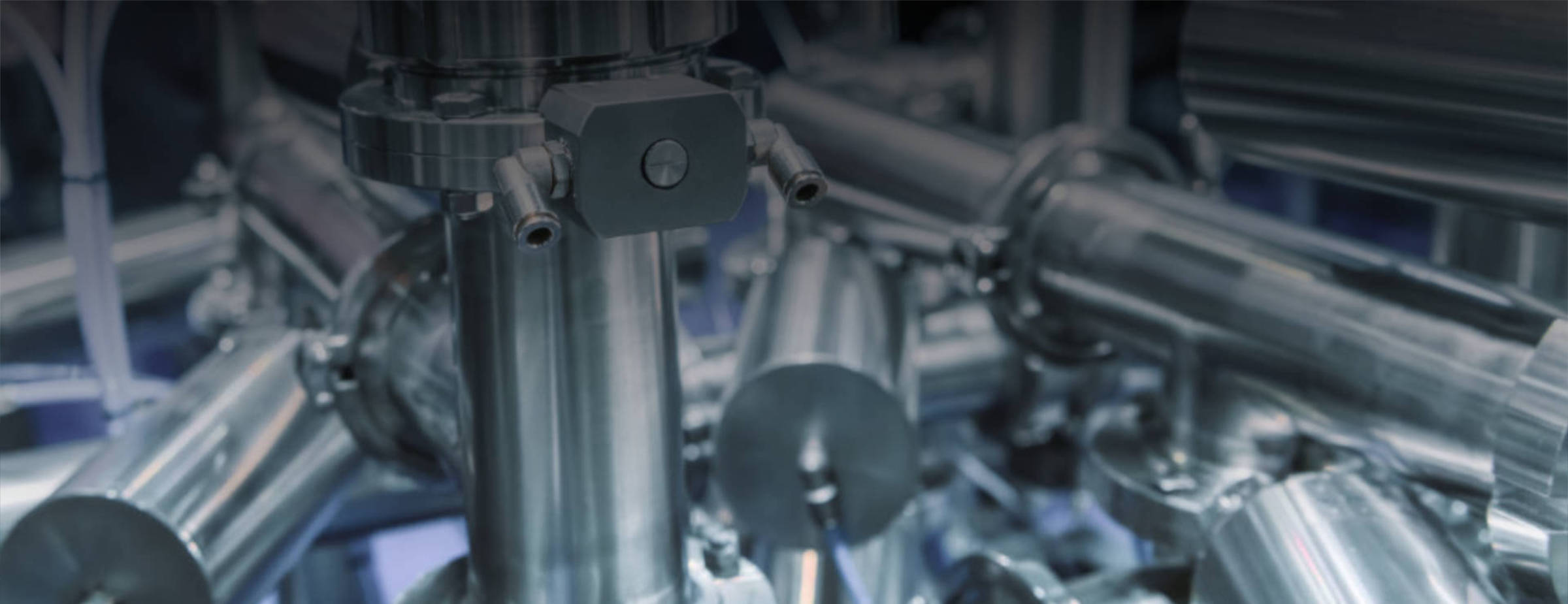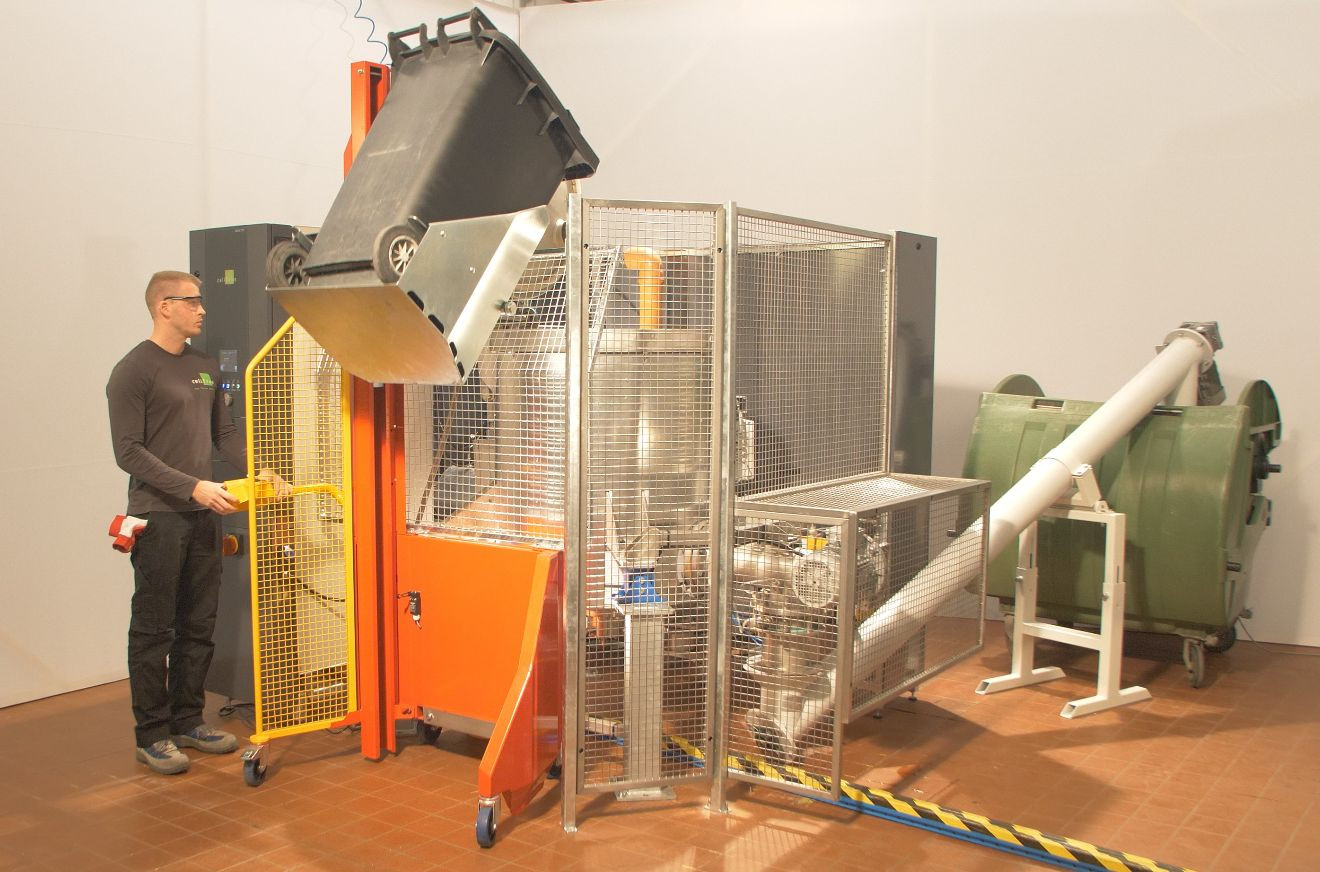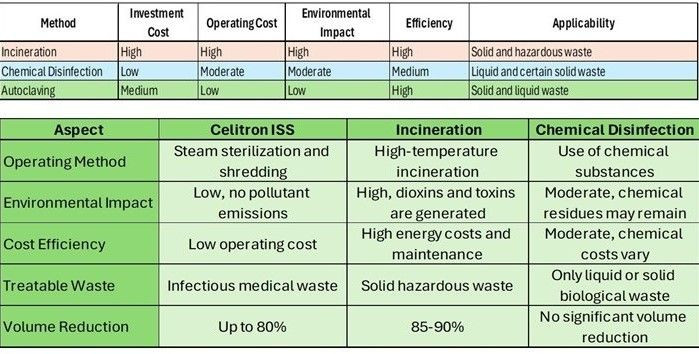
Comparison of Healthcare Waste Management Methods and Celitron's Innovative Solutions
20-02-2025

Comparison of Medical Waste Treatment Methods and Celitron's Innovative Solutions
Introduction:
Proper management of hazardous waste generated in healthcare facilities is crucial to protect human health and the environment.
Different waste treatment methods are available, each varying in effectiveness and environmental impact.
This article compares the methods of incineration and chemical disinfection, introduces the Celitron ISS system, and examines the role of landfills in waste management.
Traditional Medical Waste Treatment Methods
Incineration
Incineration involves burning waste at high temperatures, resulting in significant volume reduction and pathogen destruction. However:
Environmental Impact: Harmful substances, such as dioxins and furans, may be released into the atmosphere during incineration.
High Costs: Building and operating incineration plants require substantial investment.
Chemical Disinfection
Chemical disinfection uses chemical agents to destroy pathogens. Its pros and cons include:
Advantage: Lower capital investment compared to incineration.
Disadvantages: Not effective against all pathogens, and handling chemical agents requires special precautions.
Autoclaving
Autoclaving utilizes steam sterilization to disinfect waste. Its characteristics are:
Advantage: Effectively destroys microorganisms.
Disadvantage: Waste volume does not significantly decrease, and pre-shredding may be required.
Celitron ISS Technology and Landfills
The Celitron Integrated Sterilizer and Shredder (ISS) is an innovative solution for medical waste management.
The ISS system first shreds the waste, then sterilizes it with steam, rendering the processed waste non-hazardous and safe for disposal in landfills.
Advantages for Landfills:
Volume Reduction: Shredding significantly reduces waste volume, saving landfill space.
Reduced Infection Risk: Sterilization destroys pathogens, minimizing the risk of infection.
Environmental Protection: Safely treated waste reduces the potential for soil and water contamination.
Advantages and Disadvantages
Advantages:
Eco-Friendly Solution – No harmful emissions are released into the atmosphere.
Cost-Effective – Reduces transportation and disposal costs.
High Safety – The closed system minimizes infection risks during processing.
Significant Volume Reduction – Achieves up to 80% volume reduction.
Flexible Application – Suitable for processing various types of medical waste.
Disadvantages:
Higher Initial Investment – The ISS system requires significant initial costs.
Maintenance Requirement – Regular maintenance is necessary for efficient operation.
Energy-Intensive Operation – Steam sterilization is energy-consuming.
Limited Capacity – Large waste volumes may require multiple units.
Professional Training Requirement – Proper training is needed for safe and efficient operation.
Summary
Modern medical waste management methods, including incineration, chemical disinfection, and steam sterilization-based ISS technology,
each have distinct advantages and disadvantages. The Celitron ISS system stands out for its eco-friendly, cost-effective, and safe operation,
significantly reducing landfill burdens.
For healthcare facilities, choosing the right waste management method enhances both safety and efficiency while contributing to sustainable waste management.